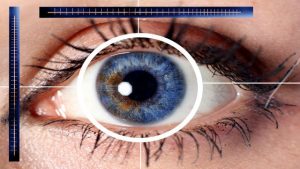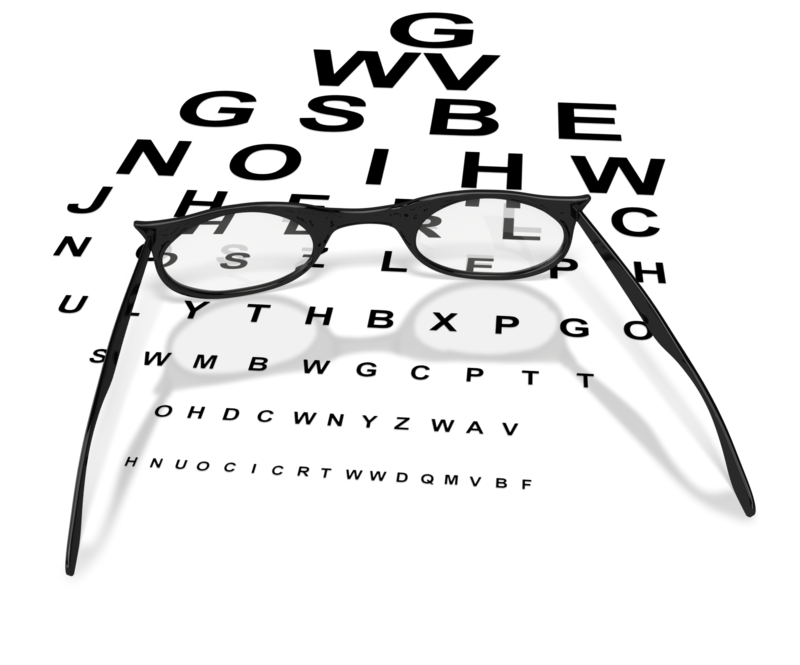Orthokeratology
Orthokeratology, or Ortho-k for short is a simple treatment where special contact lenses are worn overnight in order to gently re-shape the front of the eye. The intention is to slow or halt the progression of Myopia so it is most effective if caught in the early stages in children. The special lenses are removed in the morning and result In crisp, natural vision all day without the need for glasses or contact lenses.

Our consultants at Anne Gill Eyecare are experts at fitting all types of contact lenses and have undergone extensive training. They use high-tech equipment to map the surface of the cornea and advise you as to your suitability for this treatment.
The treatment has been in use since 2002 with several thousands of successful applications. It is available to patients within a particular range of short-sightedness so please contact us to arrange a test to assess if it is suitable for your particular condition.
Results of the treatment can be seen quite quickly, in fact most of the correction can be achieved after just the first night of wearing the corrective lenses and within a week, you typically will no longer be reliant on glasses or contact lenses.
If you’d like to discuss any clinical eye condition, or would like any information about eye conditions in leaflet form, please contact us. We’d be delighted to help in any way we can.
Clinical Conditions and Eye Diseases.
Regular eye tests are important for the detection of many eye diseases as well as checking how good your vision is. If you are over 40 and have a family history of eye disease, regular eye tests are even more important.
Myopia
Myopia is more commonly known as short-sightedness. It results from an elongation of the eye which moves the focal point on the retina, resulting in blurred vision.
Typically, Myopia is hereditary so if your parents are short sighted, then you are likely to be as well. There is currently no cure for short-sightedness but Myopia control can slow or halt its progression.
Obviously short-sightedness can be overcome with glasses or contact lenses but for many, this is quite inconvenient as it can restrict them from some activities.
Highly Myopic eyes bring with it a greater risk of developing more serious eye conditions such as detached retinas and glaucoma.
Blepharitis
Blepharitis is the inflammation of the eyelids. There are two types:
1. Anterior blepharitis
2. Posterior blepharitis
Blepharitis is common and GPs say it accounts for 5% of all eye problems they
see.
For many people blepharitis is often a low level, but long term inflammation and many experience periods of time when there are no symptoms. However, inflammation can occur for long periods of time and may require treatment.
Your Optometrist or doctor can spot the signs of blepharitis by looking closely at your eyelids, Eyelid hygiene is the first line
of management.
Cataracts
A cataract is a clouding of the lens in your eye and can develop in one or both of your eyes. The lens is normally clear and sits behind the iris, the coloured part of the eye.
Cataracts are painless and usually cause a gradual worsening of sight. The main symptoms are blurred vision, dazzling by lights, double vision and changes in colour vision.
Once vision is affected, the majority of cataracts can be treated. This is usually a short operation under local anaesthetic to remove the old, cloudy lens; replacing it with a clear plastic implant (an intra-ocular lens).
Flashers & Floaters
Debris within the vitreous humour casts a shadow on the retina at the back of the eye, and appears to ‘float’ in your field of vision.
Floaters can appear in a variety of shapes and sizes such as black dots, smoke, shadow or hairs. They are more visible against clear, pale backgrounds such as
white walls or blue sky. They move when your eye moves in different directions and seem to dart away when you look at them.
Floaters do not usually cause long-term visual impairment; but you should tell your Optometrist immediately if they occur, especially if you:
- Notice a sudden increase in the number of the floaters, or they start to look different
- Start to see flashing lights
- Have experienced floaters in one eye but they now appear more noticeable
or appear in the other eye - Have floaters which make it difficult to carry out everyday tasks, such as driving or reading
- Have a grey area, shadows, or hairlike areas appearing in your vision
Glaucoma
Glaucoma is the given name to a group of eye conditions where the optic nerve is damaged at the point where it leaves the eye. The optic nerve carries images from the retina, the light sensitive membrane attached to the inner surface of the eye, to the brain.
Regular eye tests are important. Chronic glaucoma affects one percent of people over 40 and five percent of people over 65. The risk of glaucoma increases with age and if left untreated it can cause blindness.
Your Optometrist will carry out tests to see if there are any signs of glaucoma. If there are any signs, your Optometrist will refer you to an Ophthalmologist at the hospital for further diagnosis and any required treatment.
Although damage caused by glaucoma cannot be repaired, with early diagnosis, regular observation and treatment damage can usually be kept to a minimum.
Macular Degeneration
The macula is a small area in the middle of the retina with the greatest amount of light sensitive cells and is used for finedetailed central vision. Macular
degeneration is a painless disorder that can affect either eye, causing progressive loss of central and detailed vision.
Age-related Macular Degeneration (AMD) is the most common form, although some forms affect younger people . There are two main types of AMD, referred to as ‘wet’ and ‘dry’. This is not a description of how the eye feels, but of whether leaking blood vessels are involved. Dry AMD accounts for 90% of cases, with 10% being wet AMD. Dry AMD can become wet AMD.
‘Wet’ AMD treatment is only effective if it is detected early; this is essential as it can damage vision rapidly.
For ‘Dry’ AMD there is no treatment is available.
Your Optometrist will conduct tests if you have signs of AMD; this may include eye drops to dilate the pupil giving a better view of internal structures. You may then be referred to an Ophthalmologist who can diagnose AMD at an early stage using more complex tests.
